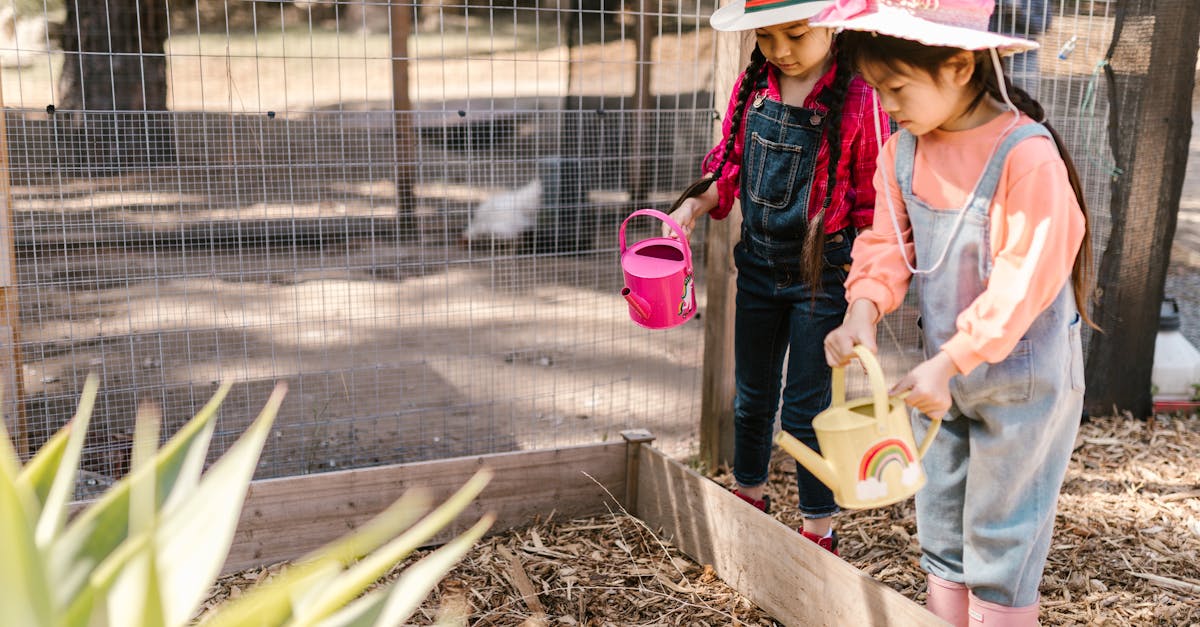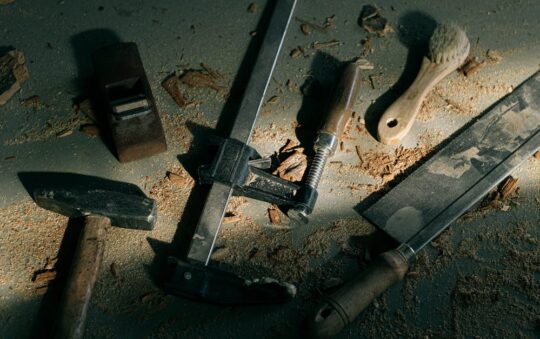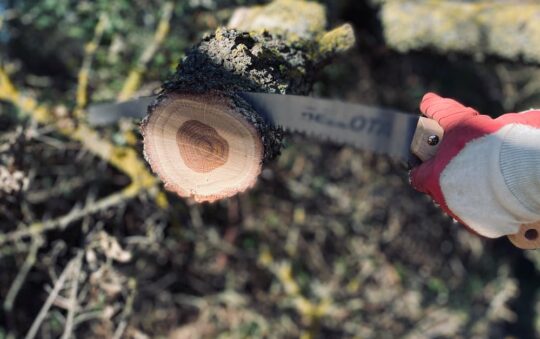Have you ever struggled with a watering can that leaks or feels flimsy just when your garden needs it most? I’ve been there—gripping a rusty, dented can under the blazing sun, wishing for something tougher. Finding a durable watering can isn’t just about convenience; it’s about making every drop count while standing up to the elements.
In this text, I’ll share what I’ve learned about choosing watering cans built to last outdoors. From materials that resist wear to designs that make watering effortless, I’ll help you pick a can that’s as reliable as your green thumb. Let’s jump into the world of sturdy garden tools that keep your plants thriving season after season.
Features of Durable Watering Cans for Outdoor Use
Picking the right watering can for your outdoor garden is more than just about looks. It’s about how well it stands up to daily use, how comfy it feels in your hands, and whether it gets the water where your plants need it most. Let me walk you through the main features that make a watering can both sturdy and user-friendly.
Material Quality and Durability
One of the first things I look at is what the watering can is made of. Metal cans like galvanized steel are a favorite for outdoor use because they handle wear and tear without cracking or fading. They might get a little heavy when full, but I find they last through multiple seasons. On the flip side, high-quality plastic cans are lightweight and resist rust, which means less worry about leaks or soggy handles.
Here’s a quick rundown of common materials and what to expect:
| Material | Pros | Cons |
|---|---|---|
| Galvanized Steel | Long-lasting, rust-resistant | Heavier when filled |
| Heavy-Duty Plastic | Lightweight, no rust | Can crack in extreme cold |
| Copper/Brass | Stylish, naturally antimicrobial | More expensive, needs polish |
In my experience, choosing metal cans with a protective coating helps avoid rust stains on your porch or patio. Plastics with UV protection are a smart pick if your watering can lives in the sun for hours.
Capacity and Size Options
Watering cans come in all sizes from small handheld to large-capacity giants. For outdoor use, I recommend cans between 1 and 2 gallons. This size strikes a nice balance: enough water to cover a good swath of garden but not so heavy that your arm screams halfway through.
If you’re tending a large garden or want to water multiple containers without refilling, a bigger size definitely saves time. But keep in mind the weight when full — I’ve dropped a too-heavy can once or twice (luckily, my plants forgave me).
Quick Tip: Pick a size that fits your strength and garden area. Too big means spills and sore muscles; too small means constant refilling.
Design and Ergonomics
Comfort matters. Gripping a watering can with sweaty or slippery hands can turn watering time into a mini workout — and not the fun kind. Look for cans with handles that curve naturally where your hand rests. Dual handles are a bonus because they give you control when pouring and stability when carrying.
I’ve found that cans with balanced weight distribution feel less awkward. Odd designs may look cool but tend to tip or require awkward bending. Plus, some models add handy features like measuring marks inside so you know exactly how much water you’re carrying.
Spout Type and Water Flow Control
This is where good design meets function. The spout controls whether you get a gentle sprinkle perfect for seedlings or a strong stream for bigger plants. Most durable outdoor watering cans come with a detachable rose. That’s the round shower-head-like part that you can take off to increase flow speed or swap out for different spray patterns.
I like watering cans that let me switch between sprinkles and pouring easily. It’s surprising how much difference a good spout can make—small seedlings appreciate a softer touch, while established plants usually want more water fast.
If you want to get precise, look for a spout with a narrow tip for directing water exactly where you want it. This is a lifesaver if your garden has tricky spots or delicate plants.
Taking the time to pick a durable watering can with these features means less fuss watering your outdoor green friends. Trust me, a well-chosen can makes those daily gardening moments smoother and more enjoyable—and your plants happier too.
Performance and User Experience
Finding a watering can that performs well and feels comfortable in your hand can make a huge difference in your gardening routine. Let’s talk about what I’ve noticed matters most once you start using these cans outdoors.
Ease of Use and Handling
One thing that stands out for me is how the design affects handling. A watering can that’s too heavy when full or has awkwardly placed handles just slows you down. The sweet spot is a can around 1.5 gallons, which strikes a good balance — not too bulky but still holds enough water to keep you moving. Look for ergonomic handles that feel natural in your grip and allow two-handed pouring if you need more control.
Some models include angled spouts that help direct water precisely without tipping the can at weird angles. That’s a real lifesaver when you’re trying to avoid splashing freshly planted seeds. (I once ruined a whole patch by overpouring — never again!) Also, a well-balanced can with a low center of gravity makes it easier to carry and prevents spills.
Quick Tip: When testing a watering can, fill it halfway and practice pouring before buying. This way you’ll immediately know if it feels right in your hands.
Longevity and Weather Resistance
Outdoors means exposure to sun, rain, and sometimes freezing cold, so durability is key. Over the last few seasons, I’ve noticed galvanized steel cans hold up far better than plastic ones. Plastic often becomes brittle or fades, especially under strong sunlight. On the other hand, steel cans might dent but rarely crack or leak.
Make sure your watering can has a rust-resistant coating or is made from a rust-proof material like stainless steel or brass if you want something that lasts a lifetime. Some heavy-duty plastics use UV stabilizers to fight sun damage — a good upgrade if you prefer lighter cans.
Here’s a quick overview of common materials and their weather resistance:
| Material | Weather Resistance | Longevity Estimate |
|---|---|---|
| Galvanized Steel | High (with proper coating) | 5-10 years+ |
| Heavy-Duty Plastic | Moderate (UV stabilized) | 2-5 years |
| Copper/Brass | Very High (natural resistance) | 10+ years |
Watering Efficiency
A watering can isn’t just about carrying water — it’s about getting it to your plants gently and evenly. The spout design plays a starring role here. A rose (the removable round spout with holes) creates a fine sprinkle perfect for delicate seedlings, while a narrow spout focuses flow for targeted watering deep in pots.
Some cans offer adjustable or multiple spouts for switching between sprinkle and stream. That flexibility is a time saver. Plus, a good flow control system means you can easily regulate the water volume without leveling off or stopping to refill constantly.
In my experience, watering efficiency also ties back to ergonomics. A well-balanced can with an easy-to-control water flow means less wrist strain — especially important if you have a lot of plants or mobility concerns.
- Choose watering cans sized for your garden scale — big enough to reduce trips but light enough to handle easily.
- Prioritize comfort features like soft grips and well-placed handles to avoid fatigue.
- Consider materials carefully based on your climate — metal for long-term outdoor use, plastic for light duty or indoor use.
- Opt for cans with spouts that match your watering style: sprinkle for seedlings, stream for mature plants.
Pros of Durable Watering Cans for Outdoor Use
When I switched to a sturdy watering can for my garden, it felt like a breath of fresh air—my watering routine suddenly had zero drama. Here’s why durable watering cans stand out:
Lasting Through the Seasons
These cans handle the outdoors like champs. Whether it’s blazing sun, surprise rain, or a quick frost they don’t crack, warp, or leak. For example galvanized steel cans resisted rust and dents for over two years in my experience while cheaper plastic ones started leaking within months.
Comfort That Makes a Difference
Durable cans generally feature ergonomically designed handles that feel great in your hands even when the can’s full and heavier. I love how some models have thoughtfully placed grips that reduce wrist strain making it easier to water without feeling like I just lifted weights.
Watering Without the Mess
A quality spout means water flows gently and evenly. I recall switching to a durable can with a rose spout that spread water much more smoothly preventing flooding or soil erosion around my plants. Plus it helps me be more precise with seedlings that need a tender approach.
Convenience in Size and Weight
Most durable watering cans strike a sweet spot in size—usually between 1 to 2 gallons. That means they hold enough to cover a decent patch but aren’t too heavy or bulky for me to carry comfortably. It’s like they get how gardeners think (finally!).
Weather and Wear Resistance
Outdoor watering cans often face sun bleach, rain damage, or rough storage spots. Durable options like powder-coated steel or high-grade plastic resist fading, cracking, and corrosion. I’ve seen these cans keep their color and shape after months outside which saves me the headache of premature replacement.
Good Value When You Look Closer
At first a solid watering can might seem pricier than a basic plastic one. But from my experience lasting years without leaks or breakage that price smooths out. Plus the time saved from fixing leaks or refilling tiny cans means it really pays off.
Quick Tips for Choosing Your Durable Watering Can:
- Look for materials like galvanized steel or thick HDPE plastic
- Check handle placement to find what’s comfortable for your grip style
- Pick a spout style that matches your watering needs—long for hard-to-reach spots or wide for gentle watering
- Consider the size you’ll carry easily but that won’t leave your plants thirsty
- Opt for cans with weather-resistant finishes for longer life outdoors
Picking a durable watering can quickly made my daily watering less of a chore and more of a relaxing ritual—no spilled water and no worrying about leaking messes. That peace of mind lets me focus on my plants, not my tools.
Cons of Durable Watering Cans for Outdoor Use
Still, even the most sturdy watering cans come with a few quirks that can catch you off guard. I’ve noticed some common drawbacks when using durable cans outdoors that might help you decide if they’re the right fit for your garden routine.
Heavier When Full
Durable materials like galvanized steel or thick plastic are great for longevity but tend to add weight. When filled up, these watering cans can feel a bit hefty, especially if you have a larger garden or multiple plants to water. It’s like lifting a small bucket, and that extra weight can strain your wrist or shoulder after a few rounds.
Quick tip: Look for models with well-placed handles or a capacity that matches your strength and garden size. Sometimes less is more!
Price Can Be a Steeper Investment
Quality usually comes at a price. Reliable watering cans made from metals or thick plastic often cost more upfront compared to flimsy, one-season types. Still, remember that this initial hit often pays off because you won’t be replacing a broken can every few months. Think of it as choosing a solid pair of shoes rather than cheap ones that fall apart after one walk.
Occasional Rust or Wear (Metal Types)
If you pick a metal watering can, rust might peek through over time. Even those with a galvanized coating, meant to resist corrosion, can show wear if left in wet conditions for too long. That said, regular care like drying off the can or storing it indoors helps a lot.
(It saved me when I learned to keep mine in the shed after a rainstorm—no rusty surprises since!)
Can Be Bulky or Awkwardly Shaped
Some durable watering cans, especially those with reinforced bodies or ergonomic designs, can feel bulky or odd to carry. What looks cool on paper may not always be the easiest to maneuver around tight garden spaces or stairs. I’ve found myself carefully navigating around flower beds like I’m in a watering can obstacle course.
Plastic Cans Still Show Signs of Aging
Even the thick, heavy-duty plastic types eventually show signs of UV damage and brittleness. If left in direct sunlight for long periods, they might crack or fade—having a little sun protection or shade for your watering can is a good move if you live in a sunny spot.
Limited Spout Options on Some Durable Models
You might spot durable cans with beautifully crafted bodies but limited spout styles. If you want precise watering, say for delicate seedlings, not every long-lasting can has the right nozzle shape or flow control. I learned this the hard way when a can with a narrow spout turned out to be a splashy mess around my ferns.
Quick Takeaways for Picking Durable Watering Cans
- Choose a size and weight that you can comfortably carry when full
- Be ready to spend a bit more for long-term durability
- Store metal cans in dry spots to prevent rust
- Consider your garden layout—can you easily maneuver with the can?
- Protect plastic cans from prolonged sun exposure
- Check spout styles carefully if you need precise watering
If these points sound manageable, a durable watering can will likely become your gardening sidekick for seasons to come—saving you from those frustrating leaks and breaks. But if your needs are occasional or lightweight is king, you might want to weigh your options carefully before splurging.
Comparison to Other Outdoor Watering Options
Choosing the right tool for watering your garden isn’t just about looks or price. It’s about what fits your daily routine, how well it works over time, and what feels comfortable in your hands. Let’s break down how durable watering cans stack up against some common outdoor watering options.
Durable Watering Cans vs. Plastic Watering Cans
Plastic watering cans are everywhere, mostly because they’re light and often inexpensive. I’ve had my fair share of cheap plastic cans crack or warp after a few seasons of sun and dirt—pretty frustrating when you’re in the middle of watering.
Why I lean toward durable watering cans:
- Longevity: Durable cans usually come in thick plastic blends or metals like galvanized steel that handle the sun’s harsh rays far better. Tossing a cheap plastic can on the ground after use? Expect cracks or breaks within months.
- Weight balance: Though heavier, especially when full, a sturdier can often feels better balanced, making pouring less awkward and messy.
- Weather resistance: My durable metal or thick plastic cans shrug off rain and sun without turning brittle or faded.
But don’t toss out all plastic cans just yet:
- For small gardens or indoor plants, ultra-light plastic cans may be easier, especially if lugging heavy stuff isn’t your thing.
- Some plastic models have UV protection which helps them last longer outdoors.
Here’s a quick snapshot:
| Feature | Durable Watering Cans | Plastic Watering Cans |
|---|---|---|
| Weight when full | Heavier, balanced | Very light, less stable |
| Weather resistance | High (especially metal) | Varies, can degrade under sun |
| Durability | Lasts multiple seasons | May crack or warp quickly |
| Price range | Mid to high | Low to mid |
If your garden is your weekend retreat (or your daily therapy), that extra heft and durability pay off. Trust me, once I switched to a galvanized steel can, watering became less of a chore and more enjoyable.
Durable Watering Cans vs. Metal Watering Cans
Metal watering cans have serious old-school charm. I think of them like your reliable, slightly rugged friend who has been around forever and knows how to get things done.
The metal can’s strong points:
- Extreme durability: Most metals, like galvanized steel or copper, can outlast plastic by years. They resist dents better and feel solid in your hand.
- Classic design: Many come with wide spouts or detachable roses (that’s the part that breaks water into a gentle shower), perfect for delicate seedlings.
- Weather hardiness: Many metals resist UV damage, but they might rust if left wet or scratched.
Some cons to keep in mind:
- Weight goes way up when filled, which can be tough if you move around a lot.
- They might need a quick dry wipe or occasional rust-proofing. I’ve had a copper can look beautiful for years after a little TLC, but those galvanized ones truly handle neglect better.
Compared to durable plastic cans with similar heft metal cans often feel sturdier and more balanced. If you like a bit of vintage style and don’t mind the weight, they’re worth considering.
Alternatives: Hoses and Sprayers
At first glance, hoses and sprayers might seem like easier workhorses for watering, especially in larger gardens. Here’s how they compare for outdoor use:
- Hoses: Great for covering big areas quickly. But hauling a long hose around can get heavy and tangle-prone. Plus, you lose that personal touch of watering right at the root (which watering cans do beautifully).
- Sprayers: Perfect for evenly misting plants, especially delicate flowers or indoor seedlings. They can be finicky when used outdoors due to wind, and battery-powered ones need charging or new batteries.
Still, watering cans win when it comes to precision and care during your daily routine. You can control water flow better, avoid overwatering, and reach spots that hoses might miss.
Quick tips for using hoses or sprayers effectively:
- Use a hose with an adjustable nozzle for control.
- Pick sprayers with multiple settings for mist, shower, or jet.
- Always check water pressure – too strong can hurt delicate plants.
In my gardening journey, combining a sturdy durable watering can for detailed care with a hose for the lawn strikes the best balance.
Takeaway: While hoses and sprayers are handy for large jobs, durable watering cans offer unmatched control and comfort for everyday outdoor watering. Plus, they last longer and feel just right in your hands once you find the “perfect” one. That’s the sweet spot in my book.
Hands-on Experience and Testing
When I got my hands on several durable watering cans to test, I wanted to see how they held up beyond just looking good on a shelf. These cans had to prove they could handle real garden conditions and daily use without fuss.
Real-World Usage Scenarios
Using watering cans outdoors means dealing with all kinds of challenges. I tested the cans in different scenarios — watering raised beds, container plants on patios, and flower beds with delicate blooms.
One standout was a galvanized steel can with a balanced handle that felt surprisingly easy to lift, even when full. It didn’t strain my wrist during longer watering sessions. On the flip side, a heavy-duty plastic model I tried was light when empty but became awkwardly unbalanced at full capacity, making me tiptoe around spilling water.
Here are some quick takeaways from these daily watering moments:
- Weight matters. Even the most durable metal cans can get heavy when full. Look for thoughtful handle design that helps balance the weight.
- Spout control counts. I loved a spout that gave me gentle flow with minimal splashing — perfect for delicate seedlings.
- Weather test. After a few weeks in sun and rain, the metal cans showed no rust or fading. The plastic ones started to look a bit worn, especially where UV rays had their way.
One fun moment: I accidentally dropped a steel can on gravel. Not a dent or scratch to show for it. Definitely reassuring when your watering tool feels like it can take a hit.
Maintenance and Cleaning
A durable watering can isn’t just about toughness; it should be easy to clean and maintain too. I found that the simpler the design, the less likely dirt and algae get stuck inside.
A few tips from my experience to keep your watering can happy:
- Empty after use. Standing water breeds algae. Empty it out to keep things fresh.
- Rinse regularly. A quick rinse clears out any leftover fertilizer or dirt.
- Check for clogs. Especially with fine spouts or rose attachments, a charcoal filter can help prevent build-up.
- Store dry. Keeping your can under cover reduces weather wear, especially on plastic models prone to UV damage.
Honestly, spending five minutes weekly on upkeep means your watering can will look good and work well for seasons to come. And it’s less hassle than trying to fix leaks or replace parts mid-season.
Still, if maintenance isn’t your favorite part of gardening, stick with metal options. They typically resist stains and cracks better than plastic. (That said, occasionally wiping down your metal can with a cloth helps keep it shiny and rust-free.)
If you want to refresh your watering setup, think about how these real-world tests can guide your choice — from handle comfort to weather durability and how easy your future watering can will be to clean. Gardening should be fun, not a workout or a chore, right?
Key Takeaways
- Durable watering cans for outdoor use are typically made from galvanized steel or heavy-duty plastic, balancing longevity and weather resistance with weight considerations.
- Choosing the right size (usually 1 to 2 gallons) ensures ease of handling without frequent refilling or strain during watering.
- Ergonomic designs with well-placed handles and balanced weight improve comfort and reduce wrist fatigue during use.
- Spouts with adjustable flow or detachable roses provide versatile watering options, from gentle sprinkles for seedlings to stronger streams for larger plants.
- Proper maintenance, like emptying, rinsing, and storing the can dry, extends its lifespan and prevents rust or damage.
- While durable cans may cost more upfront and weigh more when full, they offer better value by lasting multiple seasons without leaking or breaking.
Conclusion
Choosing the right durable watering can makes a real difference in how enjoyable and efficient your gardening routine feels. When you invest in quality materials and thoughtful design, you get a tool that stands up to the elements and supports your plants season after season.
I’ve found that balancing comfort, durability, and watering control transforms everyday tasks into moments I actually look forward to. Whether you’re tending to raised beds or container plants, a well-made watering can becomes an extension of your care and attention.
Eventually, picking a durable watering can tailored to your needs helps keep your garden thriving while making your time outdoors more rewarding and hassle-free.
Frequently Asked Questions
What makes a watering can durable for outdoor use?
Durable watering cans are made from materials like galvanized steel, heavy-duty plastic, or copper/brass. They feature sturdy construction, weather resistance, and ergonomic designs that withstand outdoor conditions and regular use.
Which material is best for a long-lasting watering can?
Galvanized steel is the most durable and weather-resistant, but heavier. Heavy-duty plastic is lightweight but less long-lasting. Copper and brass offer a classic look but require more maintenance.
What size watering can is ideal for gardening?
A watering can with a capacity between 1 and 2 gallons provides the best balance of volume and ease of use for most garden sizes.
Why is spout design important in a watering can?
A good spout controls water flow, delivering water gently and evenly to plants, preventing soil disruption and promoting healthy watering.
Are metal watering cans harder to maintain?
Metal cans can rust and need occasional care, like drying and rust prevention. Plastic cans require less maintenance but may degrade under UV exposure.
What are the drawbacks of durable watering cans?
They may be heavier when full, cost more upfront, and sometimes have awkward shapes that affect handling. Consider strength and garden layout before choosing.
How do durable watering cans compare to hoses or sprayers?
Durable watering cans offer better control, comfort, and precision for daily watering, while hoses and sprayers are more efficient for covering larger areas.
How can I maintain my watering can for longer life?
Keep it clean, dry after use, store indoors if possible, and for metal cans, check for rust and address it promptly to extend life.
What should I consider when choosing a watering can for comfort?
Look for ergonomic handles, balanced weight distribution, and a size that fits your strength to ensure comfortable pouring and maneuvering.
Is it worth investing in a high-quality watering can?
Yes, a durable, well-designed watering can improves the gardening experience, enhances plant health, and lasts longer, making it a smart investment.




